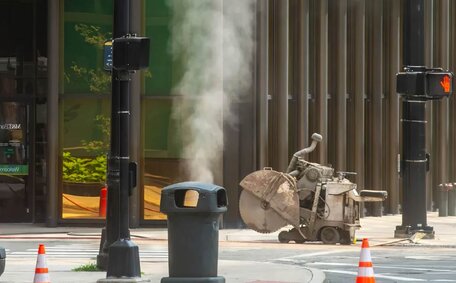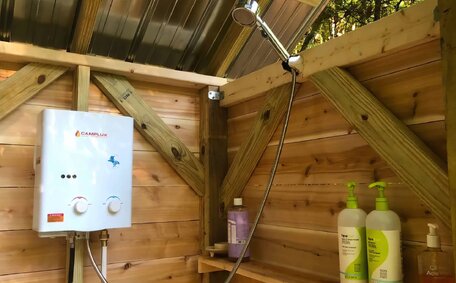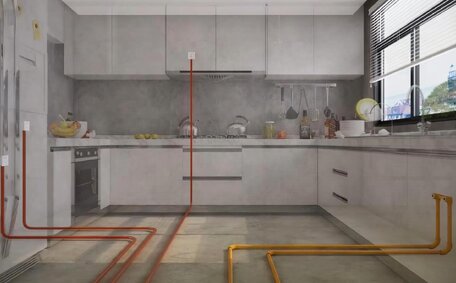
How To Move A Gas Meter
Need your gas meter relocated? You can’t move it yourself - contact your supplier to arrange for a gas engineer to reposition it safely. Charges may apply depending on circumstances.
Read MoreThere are a few key reasons why homeowners may want to relocate your hot water heater. Often, it is due to home renovations that require reconfiguring utility areas. Moving your water heater can help improve home efficiency by relocating it closer to frequently used outlets.
Other times, your water heater new may be sought after for its improved energy efficiency in a new location.
Relocating an electric hot water system has implications on hot water delivery, pressure, efficiency, and ongoing maintenance requirements. Overall, should you find that you might need to move your hot water tank, it is best left to qualified professionals.
There are also safety considerations and regulatory obligations to follow, with gas hot water system relocation involving complex technical steps.
This article provides an overview of factors to weigh, such as usage and which type of system can be moved, when assessing whether you can move my hot water heater. We also discuss key steps involved in the relocation process, the installation cost, alternatives like tankless systems, and tips to maximise safety and efficiency for the new location your unit will have.
When considering hot water service relocation, enhancing efficiency of your home is crucial by positioning it to optimise hot water usage. This helps improve the efficiency your system by minimising heat loss over long pipe runs. There are a few key factors to consider:
To maximise efficiency, especially for a gas water unit, it is best to place it centrally within the home. However, this needs to be balanced with practical factors like space constraints, gas, water and power connections. Consulting a plumber can help evaluate the pipework and real estate of your house to provide customised advice for the optimal location for your new hot water system, even if it’s on the other side of your property.
With systems like gas hot water heaters, tankless heaters or heat pumps, proximity to taps is less critical but having the unit close to gas and water lines can simplify installation. What do you need to consider? Ensure to seek guidance on off peak options if you decide to move your water heater, ensuring optimisation based on your switchboard location.
Relocating a hot water system often gives an opportunity to install new piping. This provides an opportunity to install efficient pipe types like PEX that slow heat loss. Insulating exposed pipes also helps maximise how efficiently your hot water can retain heat and saving money your energy bills.
There are several technical considerations that a professional plumber can address when tasked to move hot water system. Key aspects include:
Engaging our team of licenced professionals ensures that your system meets regulations, safety practices, and manages your costs during the complex relocation steps. They can also provide advice on maximising efficiency with systems like Rheem hot water based on where your new system is located.
When relocating a hot water system, the existing unit will need to be properly disconnected and drained. This should only be done by a qualified professional as there are safety risks to the water your system contains. Here are the key steps:
Sediment buildup can reduce your heating system’s efficiency over time, so when addressing issues like burst hot water pipes, relocating a system presents a good opportunity to flush and clean out the old tank. However, there was little discussion on how draining releases hot water containing limescale and other minerals which can stain surfaces and damage lawns.
Natural gas hot water systems in particular must only be disconnected by qualified professionals as incorrectly detached gas connections can result in dangerous gas leaks and violations. Likewise, understanding how much effort it takes to transport your water heater new or an existing cylinder and manage all electrical aspects involved must be safely handled by a licenced electrician.
When relocating a hot water system, proper transportation and handling is crucial to avoid damage. There are safety risks involved with moving large, heavy tanks of water under pressure as well as gas bottles. Key factors for professional plumbers include preventing potential water damage during transit:
With complex logistical factors, it is advisable to have professional plumbers transport the hot water system unit to can i move into your home. They can ensure safe practises are followed during the move into your new home to minimise the risk of leaks, breaks or other damage occurring.
When relocating a hot water system, proper transportation and handling is crucial to avoid damage. Key faclleys to gently move units and avoid damage.
Reinstalling and reconnecting an electric water heater or any hot water system in its new location involves several key steps. This should only be done by a qualified professional plumber due to safety risks.
With safety being paramount, a professional plumber has the expertise to follow all regulations and reinstall your gas or electric system correctly after its relocation. They can also provide tips on optimising the system in its new position to maximise efficiency.
Relocating your existing hot water system or choosing to install a new one comes with several key safety considerations. This is especially true for gas systems, which can pose risks if incorrectly handled.
Safety should be the number one priority when relocating a hot water system. Preventing leaks, fire risks, electrocution and other hazards is paramount. Following regulations and using qualified professionals helps minimise these dangers.
Relocating a hot water system to another location is a complex job best left to qualified professionals. They can provide guidance on hot water system installation to find the optimal new location to maximise efficiency. This also ensures more than just gas, water and electrical connections are managed safely when moving your hot water system. Engage our team for a detailed assessment and quote.
Licenced plumbers have extensive training and expertise in safely moving gas, electric, solar or heat pump systems while following all regulations. We can handle the end-to-end process, providing peace of mind that your system relocation is compliant, efficient and hazard-free. At Menai Plumbing, our team has years of experience assisting Sydney homeowners in moving hot water systems. Professionals have proper equipment for draining, disconnecting, securely transporting, and reinstalling hot water units without damage.
As an alternative to moving an existing storage tank water heater, installing a new tankless water heater is worth considering. Tankless heaters heat water on demand, meaning no need for a storage tank. Benefits of tankless units include:
Factors like initial cost, flow rate, placement and noise should be weighed when deciding between tankless and storage tank systems. Consult a plumber to advise on the best option for your household needs and budget.
As an alternative to moving an existing storage tank water heater, installing a new tankless water heater is worth considering.
Once a hot water system has been relocated, ongoing maintenance is important for longevity and efficiency. Here are some key tips:
Relocating a hot water system provides a good opportunity to upgrade components like insulation and swap old pipe types for newer, more efficient materials. Regular servicing and maintenance keeps your system operating safely and efficiently in its new position.
Most importantly, we hope this content has underscored the need to make sure you engage qualified professionals like the team at Menai Plumbing. With expertise in all hot water system brands such as Rheem water heaters, we can ensure your project is compliant, efficient and hazard-free.
If renovations or improving home efficiency have you contemplating repositioning your hot water unit, I recently discovered that this process is best tackled by our team of expert plumbers. We are fully equipped to handle drainage, disconnection, transport, reinstallation and testing.
This provides peace of mind that your system will move safely into your home and serve your hot water needs reliably.
Don’t hesitate to get in touch with your local Menai Plumbing experts for quotes, inspections or general guidance on relocating your hot water system. Menai Plumbing has been trusted by Sydney homeowners for years and we look forward to assisting you.
Need your gas meter relocated? You can’t move it yourself - contact your supplier to arrange for a gas engineer to reposition it safely. Charges may apply depending on circumstances.
Read MoreInvesting in a solar hot water system can save up to 75% on water heating costs. With great returns and added home value, solar hot water can be a smart choice over electric or gas heaters. Contact us to see if it’s the right investment for your home.
Read MoreWhile natural gas and propane can both power appliances in your home, they have notable differences when it comes to BTU output, infrastructure, safety, cost and more. Understanding these key contrasts will help you determine which is better for your specific needs.
Read MoreMenai, 2234 NSW
We will call back as soon as possible.




